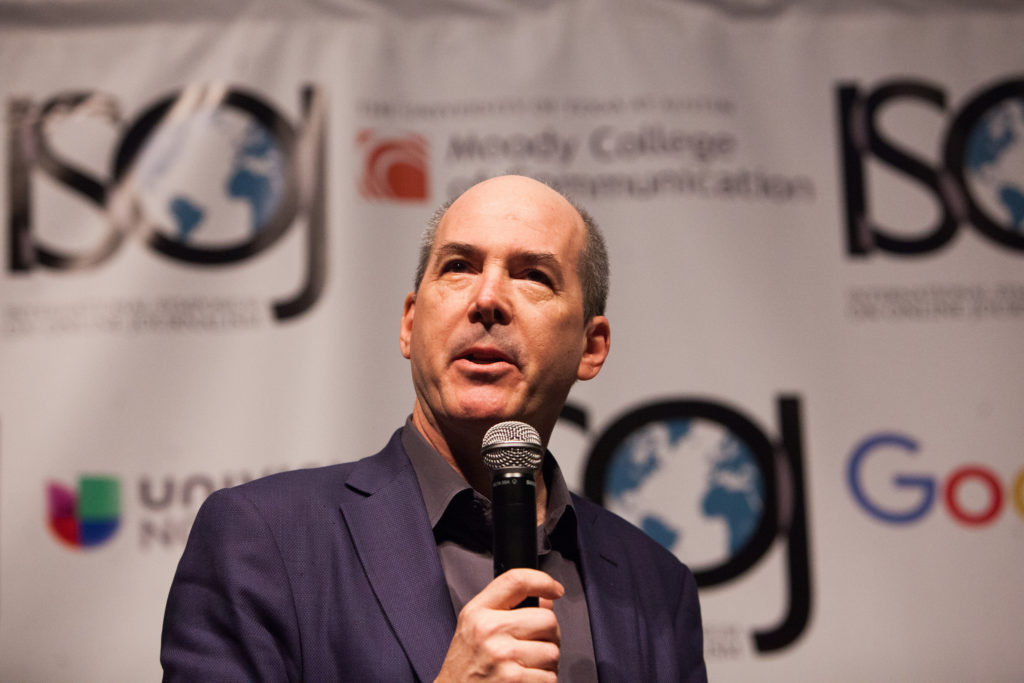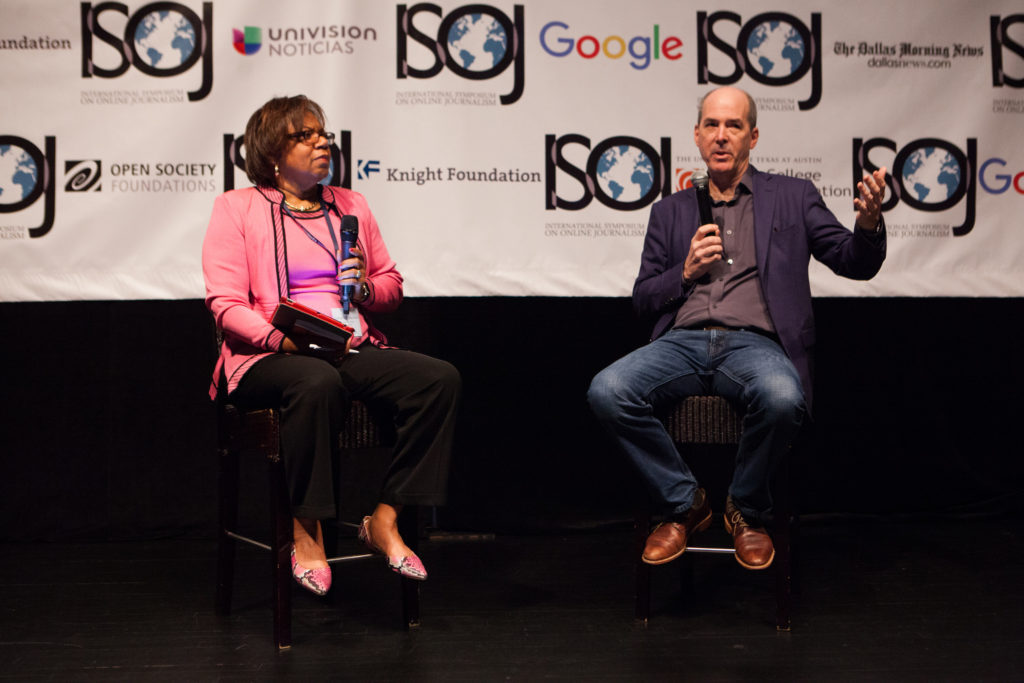April 15, 2016 | Video
Producing good journalism and embracing video are important strategies for adapting to digital change, says New York Times editor at ISOJ
The strategy of The New York Times for adapting to dynamic change in the consumption and production of news, according to Kinsey Wilson, is to persist in making and offering good journalism.

(Mary Kang/Knight Center)
Wilson, The Times’ editor of innovation and strategy, and executive vice-president of product and technology, opened the 17th International Symposium on Online Journalism (ISOJ) on Friday, April 15, as the first keynote speaker. Wilson was introduced by Lorraine Branham, dean of the S.I. Newhouse School of Public Communication at Syracuse University.
Dislocation and disruption is the context in which journalists work today, in an era of constant change of technology and media formats, Wilson said.
Regarding the rapidly changing news environment, Wilson quoted scholar Clay Shirky: “The old stuff gets broken faster than the new stuff is put in place.” He amended Shirky’s observation by adding: “The new stuff gets broken too.”
He added that revision of content and formats is daily work at The Times, with the goal of keeping up with change.
Regarding the current strategy at The Times, Wilson highlighted the following:
- Producing good journalism is the basis of everything.
- Intensifying efforts to attract more subscribers.
- Make consumption of The Times a daily habit.
- Prioritizing the business of subscriptions, giving part business subscriptions, offering some of the content for free.
- Ensure the The Times is a destination for the reader.
- Always keeping the reader as the focus.
Concerning platforms for news consumption, the current challenge is mobile devices, according to Wilson. Although this is nothing new, he added, The Times continues to study the best way to satisfy the mobile reader in terms of content and service.
Mobile devices are “relentlessly persistent,” Wilson observed, “highly attuned to the rythyms of our day.”
He said it could be possible in the near future to find a way to develop personalized content — “even if it sounds creepy” — for the mobile consumer.
Another of Wilson’s observations about current trends in journalism that he shared with ISOJ attendees is the prioritization of visual journalism as daily content at The Times.
The editor acknowledged his newspaper is “text heavy” but he predicted that within a few years 50 percent of content produced by The Times will be purely visual.

“We are also experiencing the cusp of change in storytelling, using text, photos and videos,” Wilson said. However, he added that visual journalism must go beyond just displaying photos, graphics and videos.
Regarding business strategies at the newspaper, Wilson said they are looking to sell a service along with the content. The service offered with the content has to be “useful and of great [informative] value,” he explained.
Wilson also revealed The Times is committed to doubling its digital subscription revenues within four years, hopefully reaching a total of $800 million.
He said paywalls work for publications like The Times and The Wall Street Journal, a point Branham challenged. She noted the same two examples are always used so the question remains whether paywalls are an effective business strategy.
“Advertising is still important,” Wilson replied. But, he added, the trend is advertisers don’t need the media to reach consumers, which relates to scale, in that smaller, local news operations are the “second read” and not the “first read” like The Times of The Journal.
ISOJ continues on Saturday, April 16, in the Blanton Museum of Art, on the campus of the University of Texas at Austin. It is being livestreamed in English here and in Spanish here.
ISOJ 2016: Kinsey Wilson Q&A, from Knight Center on Vimeo.

